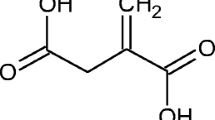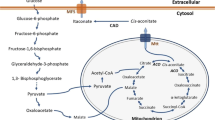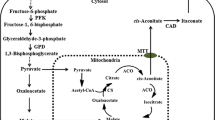Abstract.
Itaconic acid (IA) is an unsaturated dicarbonic organic acid. It can easily be incorporated into polymers and may serve as a substitute for petrochemical-based acrylic or methacrylic acid. It is used at 1–5% as a comonomer in resins and also in the manufacture of synthetic fibres, in coatings, adhesives, thickeners and binders. The favoured production process is fermentation of carbohydrates by fungi, with a current market volume of about 15,000 t/a. Due to the high price of about US$4/kg, the use of IA is restricted. At present, the production rates do not exceed 1 g l–1 h–1, accompanied by product concentrations of about 80 g l–1. New biotechnology approaches, such as immobilisation techniques, screening programmes and genetic engineering, could lead to higher productivity. Also, the use of alternative substrates may reduce costs and thus open the market for new and increased applications.
Similar content being viewed by others
Author information
Authors and Affiliations
Additional information
Received revision: 4 April 2001
Electronic Publication
Rights and permissions
About this article
Cite this article
Willke, .T., Vorlop, .KD. Biotechnological production of itaconic acid. Appl Microbiol Biotechnol 56, 289–295 (2001). https://doi.org/10.1007/s002530100685
Received:
Accepted:
Issue Date:
DOI: https://doi.org/10.1007/s002530100685




